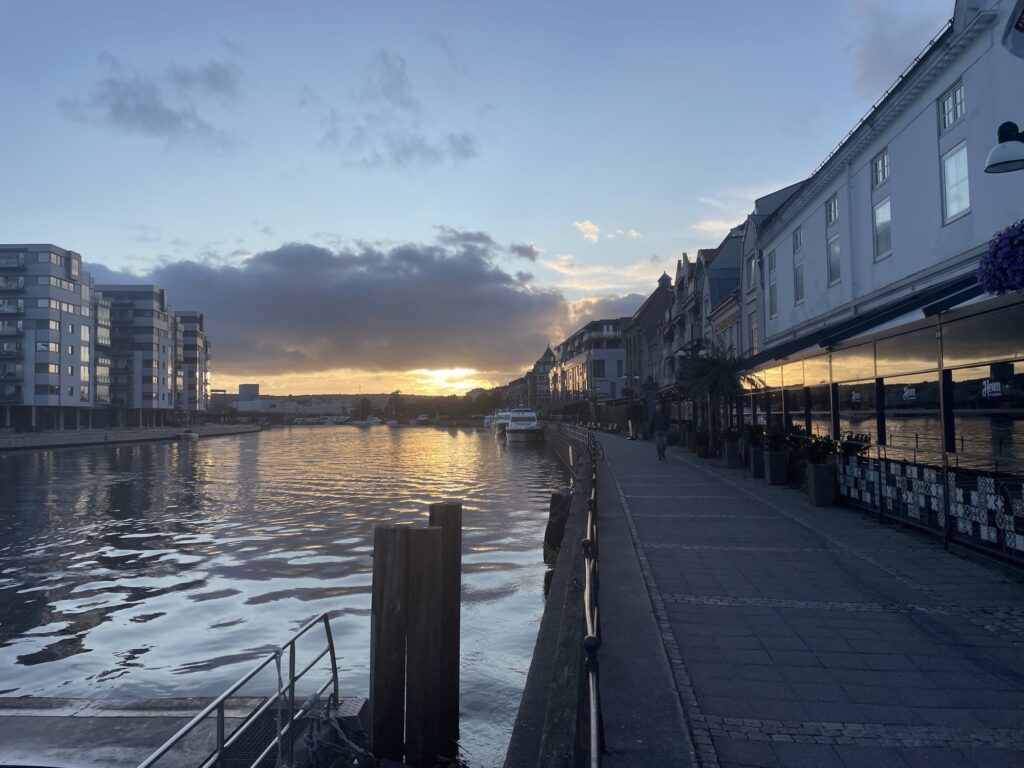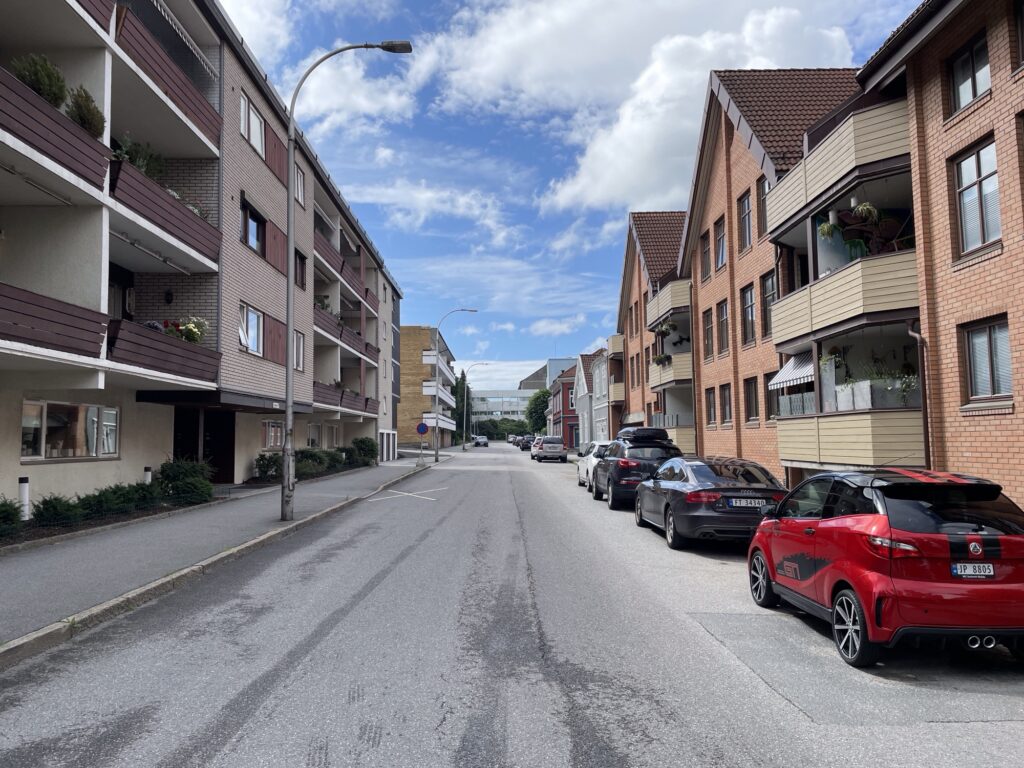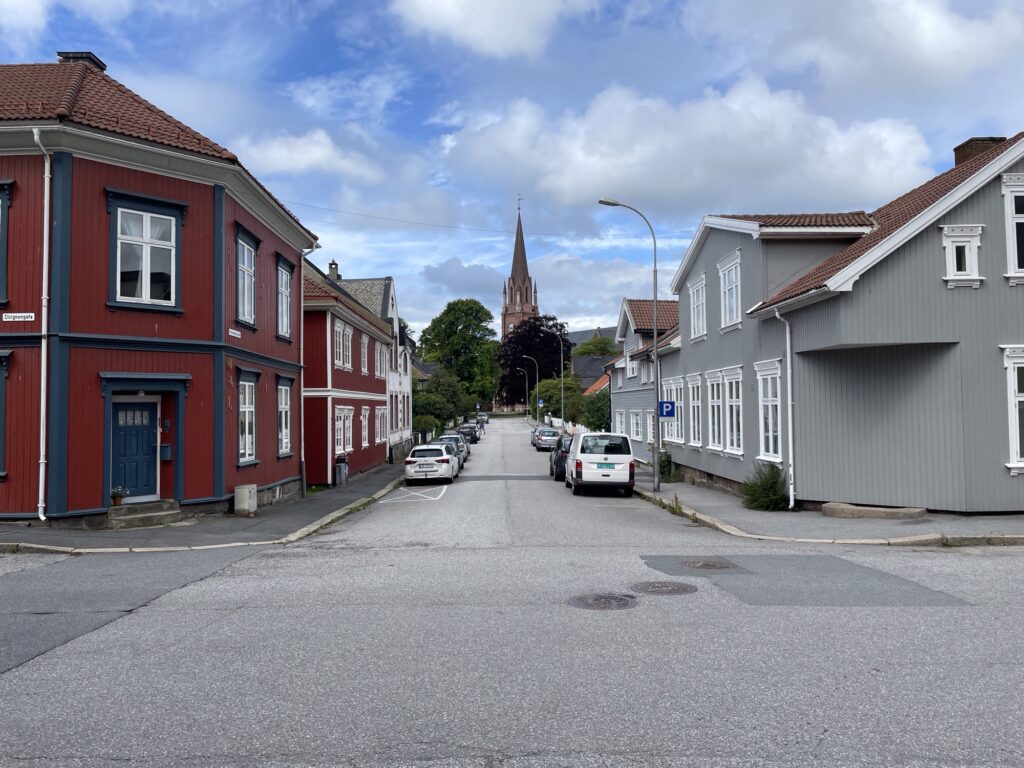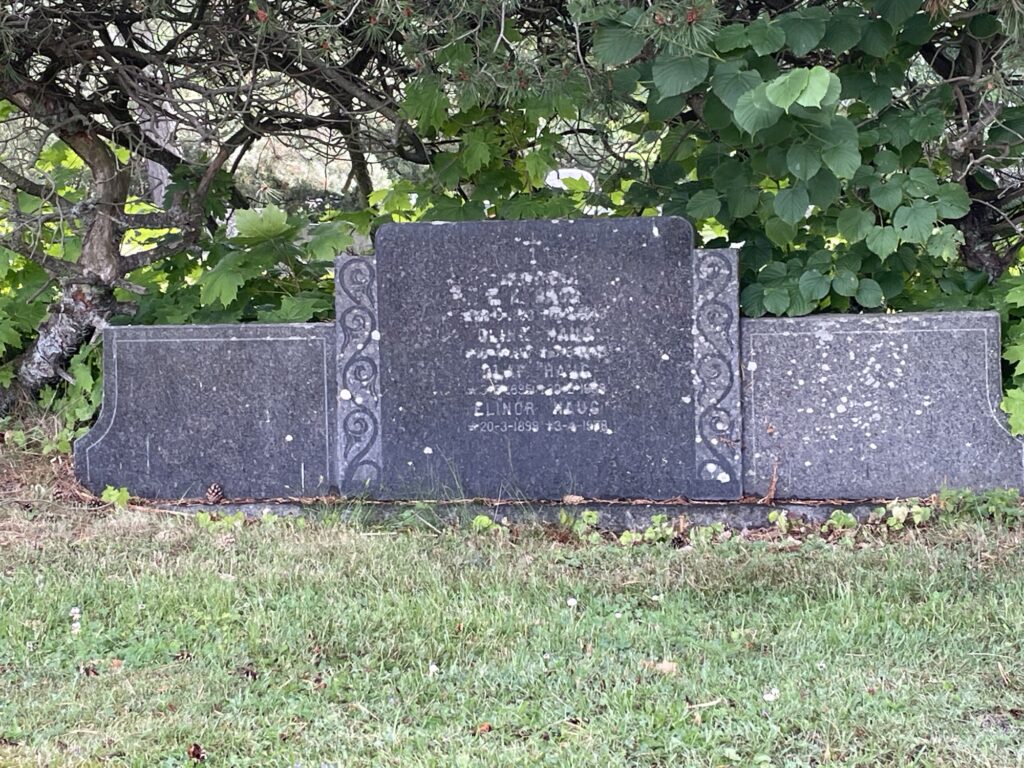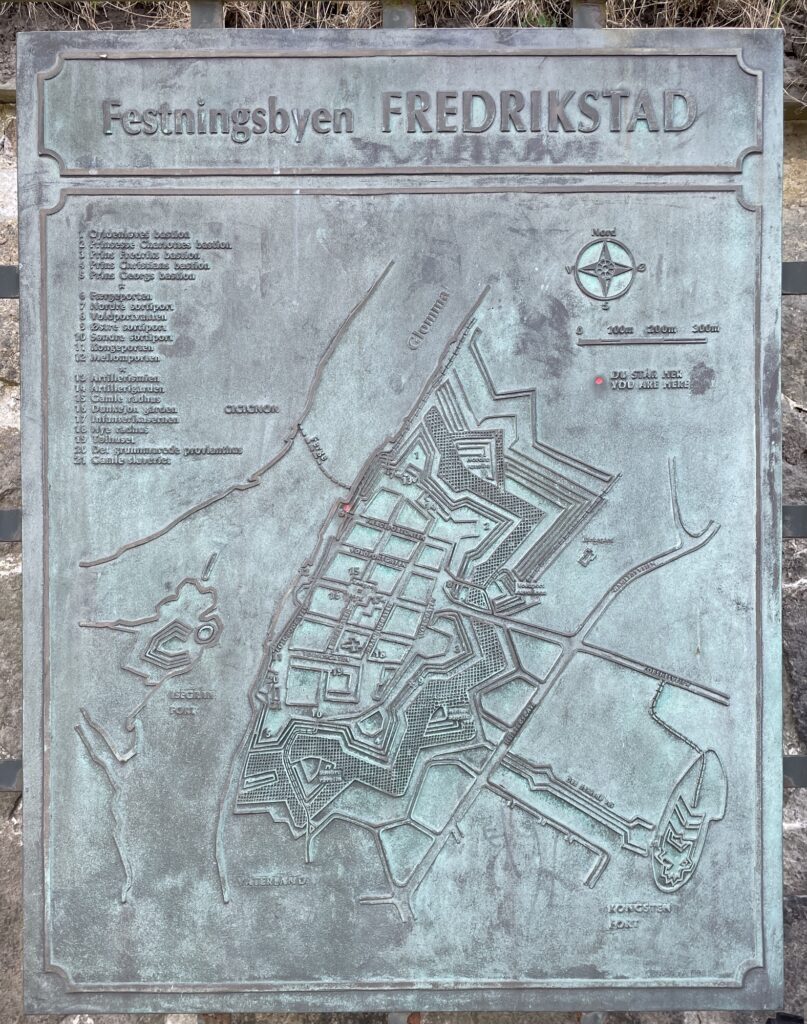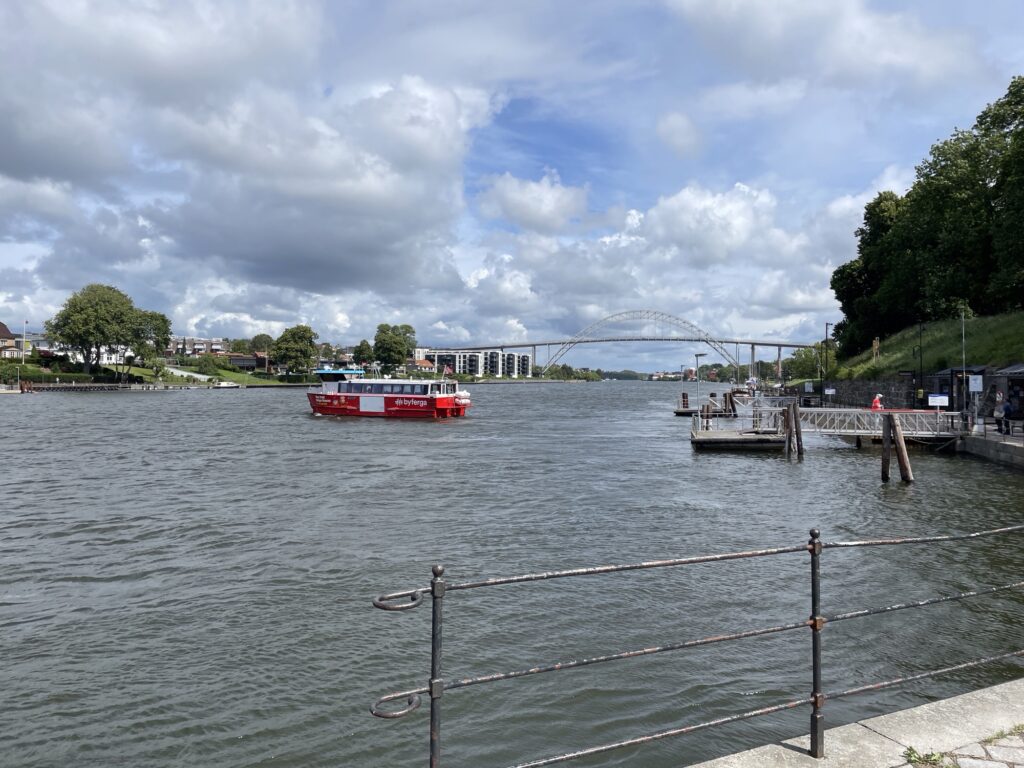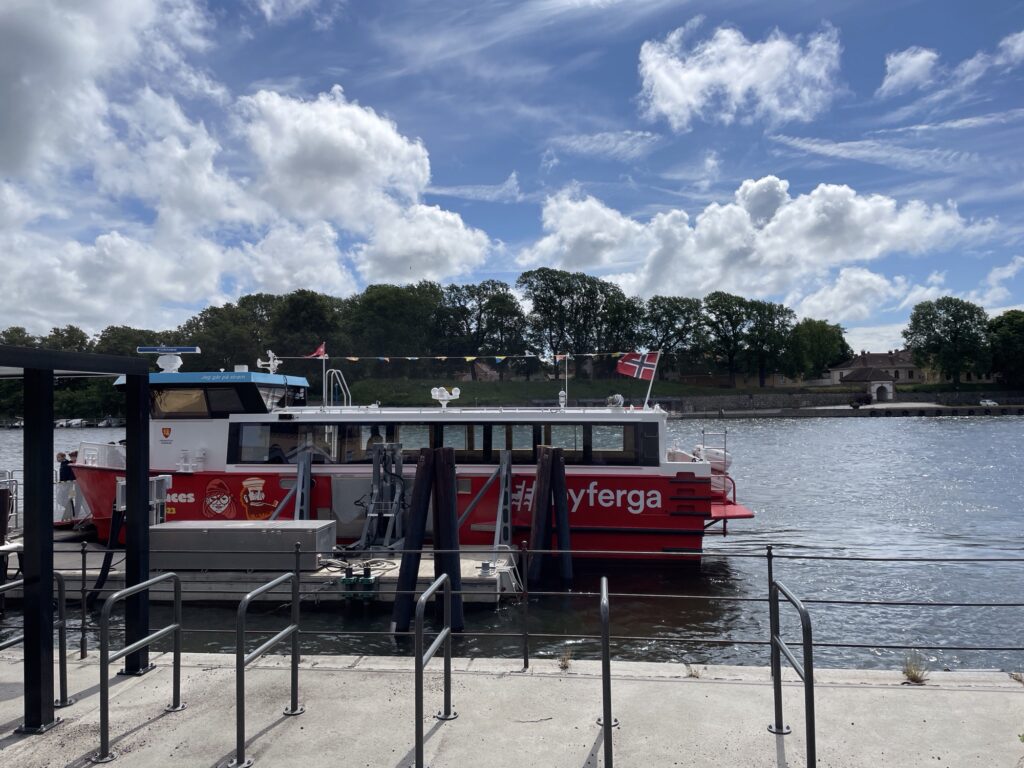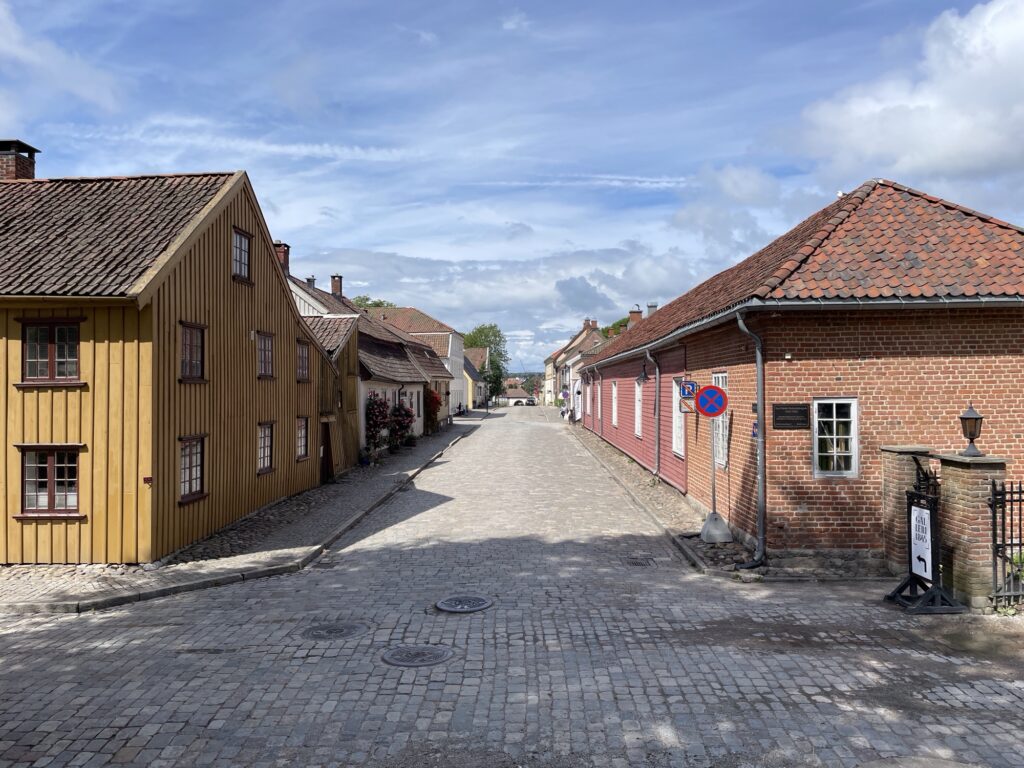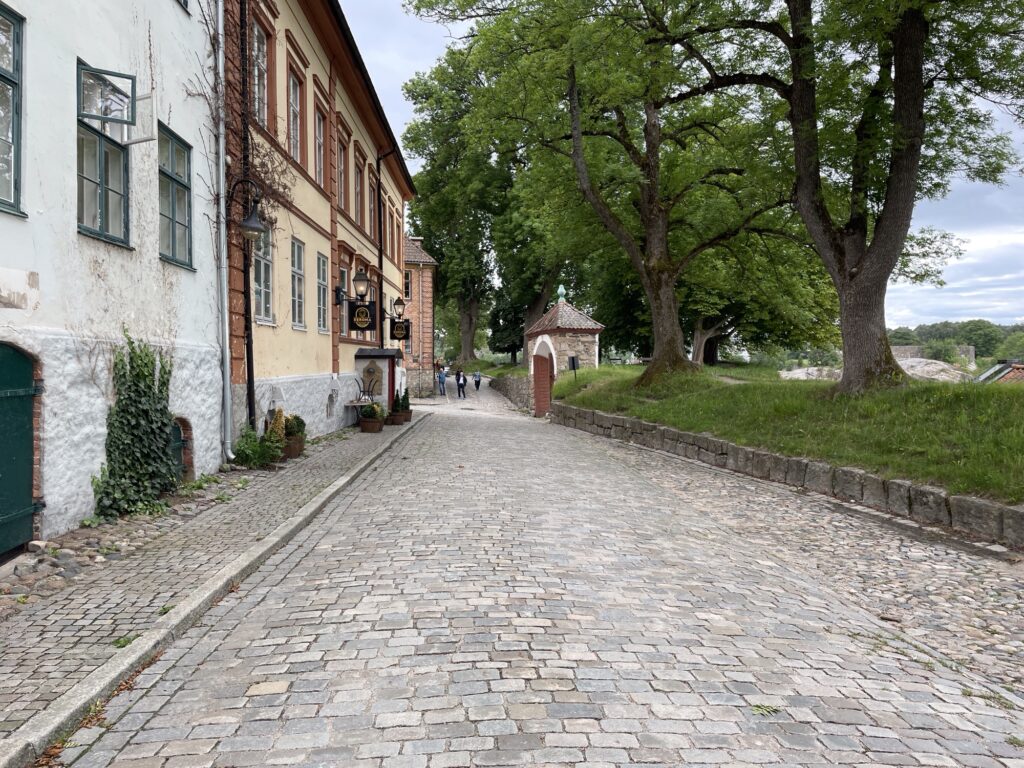In the summer of 2023, Micha and I spent some time exploring Norway and visiting friends. This post describes the second part of our trip to the south, in which we visited the capital city of Oslo before flying to Munich to visit some friends. You can read about the first part of our trip here.
We journeyed by bus from Fredrikstad back to Oslo. The ride took about two hours and was mostly uneventful, save for a rather creative three-point turn by the bus driver to pick up a few stranded passengers from a different bus. We arrived at the Oslo bus terminal in the early afternoon, ate some sandwiches, and stashed our bags in a locker so we could do some shopping and sightseeing while waiting to check in to the Airbnb. After living in Trondheim for two years, Oslo felt like a huge, bustling city in comparison.
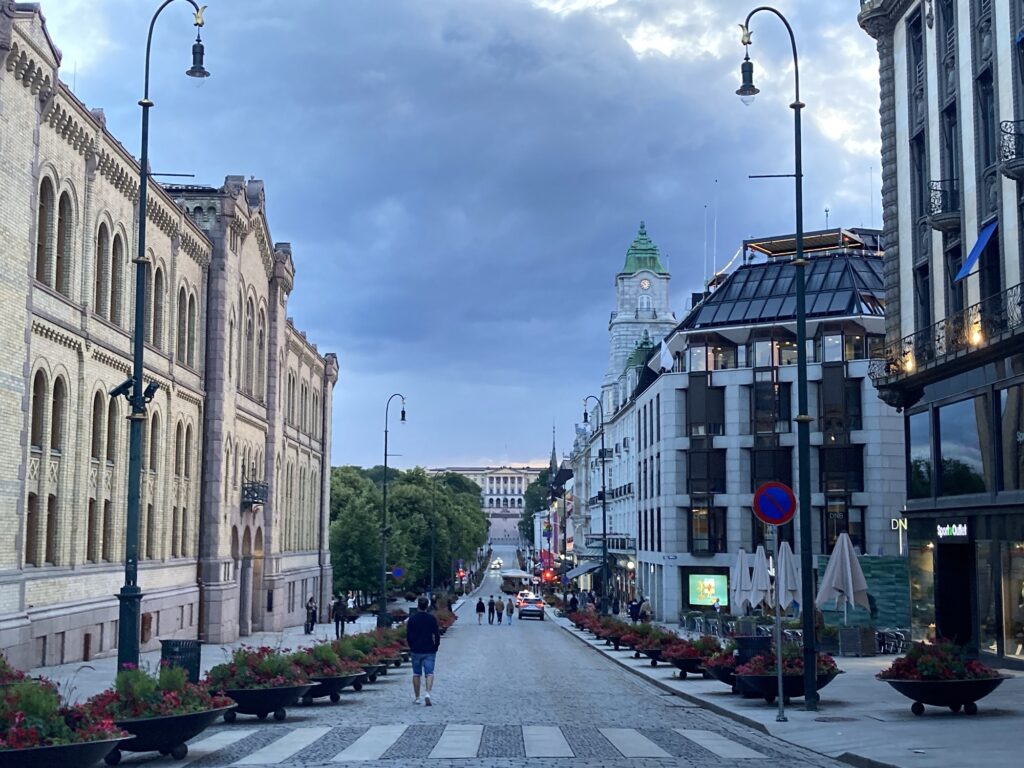
The highlight of the night was checking out the arcade bar Tilt, which had a wall-sized game of Pac-Man and a really fun rhythmic shooter game called Music GunGun — here’s a video of a single person easily handling the level that gave us a lot of problems together. We played a few different games, enjoyed a drink or two, and walked back to the Airbnb in the late evening sun.

Vigeland Park

The weather was beautiful and warm the following day, so we headed out in the morning for Vigeland Park, a famous park filled with statues of naked people named after the artist who sculpted them all, Gustav Vigeland. The entrance to the park is a bridge lined with statues of people in various random poses, meant to depict common emotions or activities that everyone can relate to. The statues seemed kind of funny to me at first, since I’m so used to proud, dignified poses rather than the snapshots Vigeland chose to depict. They depict lots of ordinary, everyday things, like stretching, chasing down and beating a thief, and surviving parenthood.



The bridge leads to an open courtyard, with a large fountain held up by statues of naked people, surrounded by beautiful gardens framed by statues of naked people, with a massive tower of naked people on a pedestal behind it all. It was beautiful, weird, quirky, interesting, confusing, and above all I had the sense that Vigeland had perhaps a little too much time on his hands.
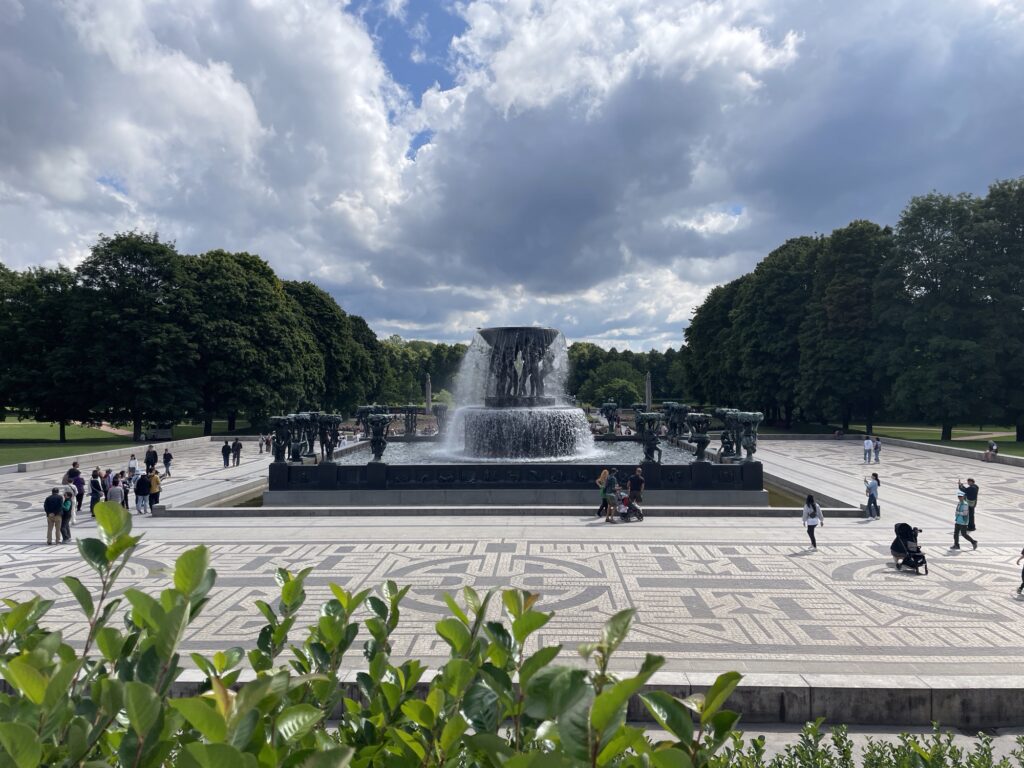

The monolith was difficult for me to photograph, since it’s 50 feet tall, the sun was beating down on it, and there were (regular, clothed) people everywhere. It was impressive, and kind of eerie. Apparently Gustav Vigeland said of it, “The column is my religion,” and I’m honestly not sure what to make of that.
The National Museum of Norway
Sunny weather in Norway rarely lasts long. The following day the skies opened up, so we went to Nasjonalmuseet (The National Museum) in the morning. The first floor is dedicated to various artifacts from different times and cultures and felt sort of like a cross between an art museum and a history museum. One of my favorite exhibits was right at the beginning and showcased the various dresses that Queen Sofia and Queen Maud wore, and how the styles changed over time.
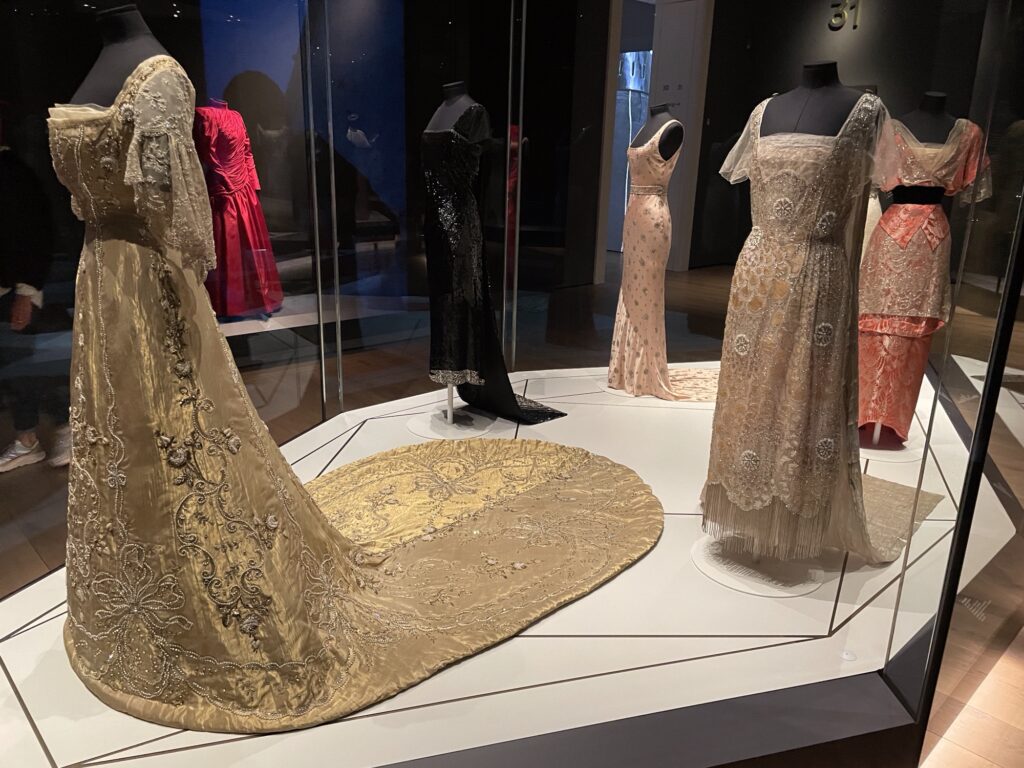
At the top of the staircase separating the two floors is a cafeteria, which served as a natural point to take a break and eat some food. I happened to be wearing the Seattle Kraken hoodie that my dad gave me. I’m not exactly a Kraken fan, but Dad thought it would be funny if I was wearing a hoodie that said “Kraken” on it in Norway, and it happens to be really comfortable and I like the blue colors. I didn’t really get the joke until a Norwegian woman stopped me in the cafeteria and told me that Kraken was a Norwegian word, and that she had a relative who lived in Seattle. She was super excited to have met an American who had been to Seattle and instantly relayed our conversation to her husband in Norwegian, who nodded confusedly and went back to sipping his coffee.
The second floor of the museum was dedicated to paintings, and in particular the work of Norwegian artist Edvard Munch. I really liked his self-portrait and the way his body disappears into the shadows.

One of Munch’s most famous works, Skrik (or Scream in English), is also in this museum and drew a small crowd. I found a couple of Monet paintings as well. All in all it was a cool museum and a fun way to spend a day, but our day wasn’t over yet. We had lined up a “ghost tour” of the nearby fortress in the evening
Ghost Tour of Akershus Fortress
I’d never done a ghost tour before, but Micha loves haunted things, so we knew we had to try it while we were in town. We waited at a street corner for our tour guide to arrive and collect the members of our tour. When everyone was ready, he took us for a stroll through a few neighborhoods and down to Akershus fortress, telling stories along the way about hidden passages under banks and haunted restaurants.
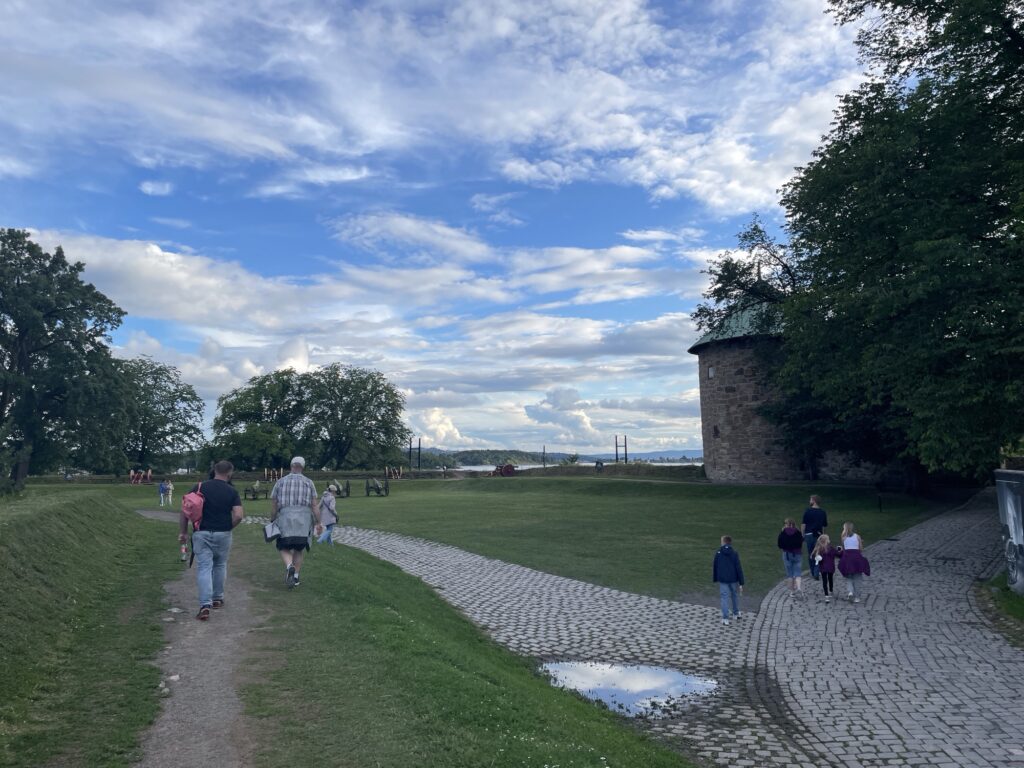
Our guide walked us through the old fortress, telling various stories about cursed horses and haunted corners. One story that stuck with me was a legend about a dog that had been sealed into the fortress walls as some kind of superstition to protect the fortress. Instead, the guards were haunted by howling and barking noises, and to this day dogs will occasionally stop and stare at the wall as if they heard something.
Sunset atop the Opera House
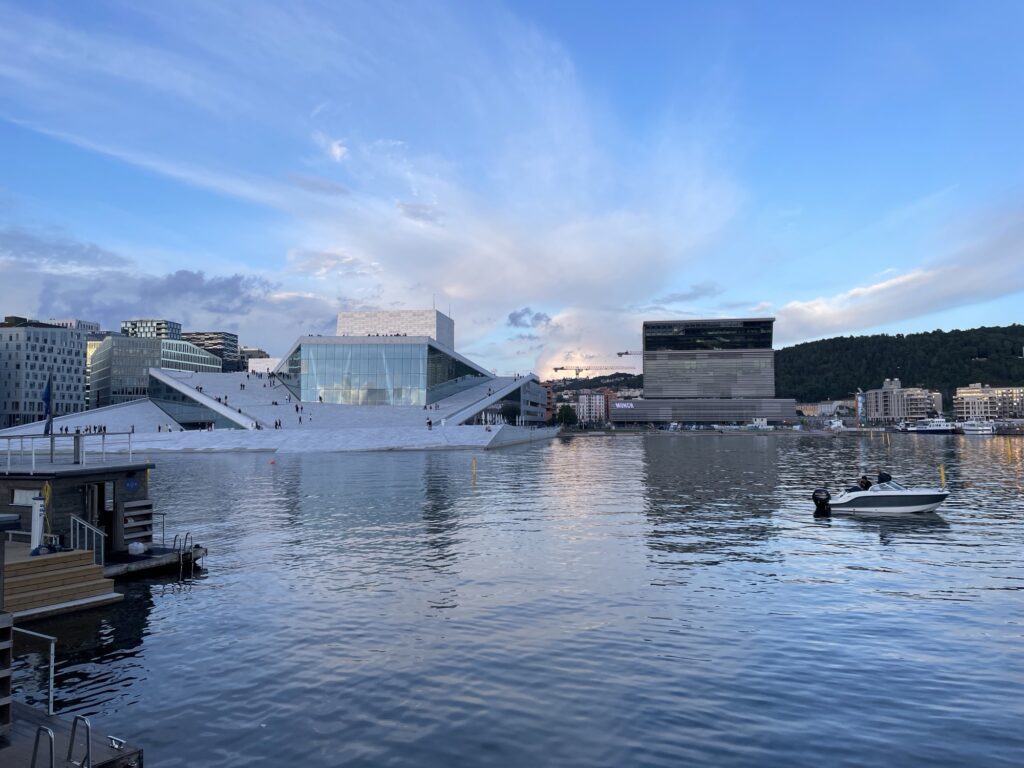
When the tour ended, we sauntered slowly back to the train station, not wanting our last day in Oslo to come to an end. Across the fjord we noticed the Oslo Opera House, a beautiful building with big concrete ramps along its sides that allow people to climb up to a viewing area at the top. We found a spot among the scattered tourists and Norwegians enjoying the last rays of sun from a beautiful day and watched the sun tuck behind the hills.

After watching the sunset, we caught the train to Gardermoen airport, where we stayed at the airport hotel for a brief rest before an early morning flight to Munich for an entirely different part of our adventure.
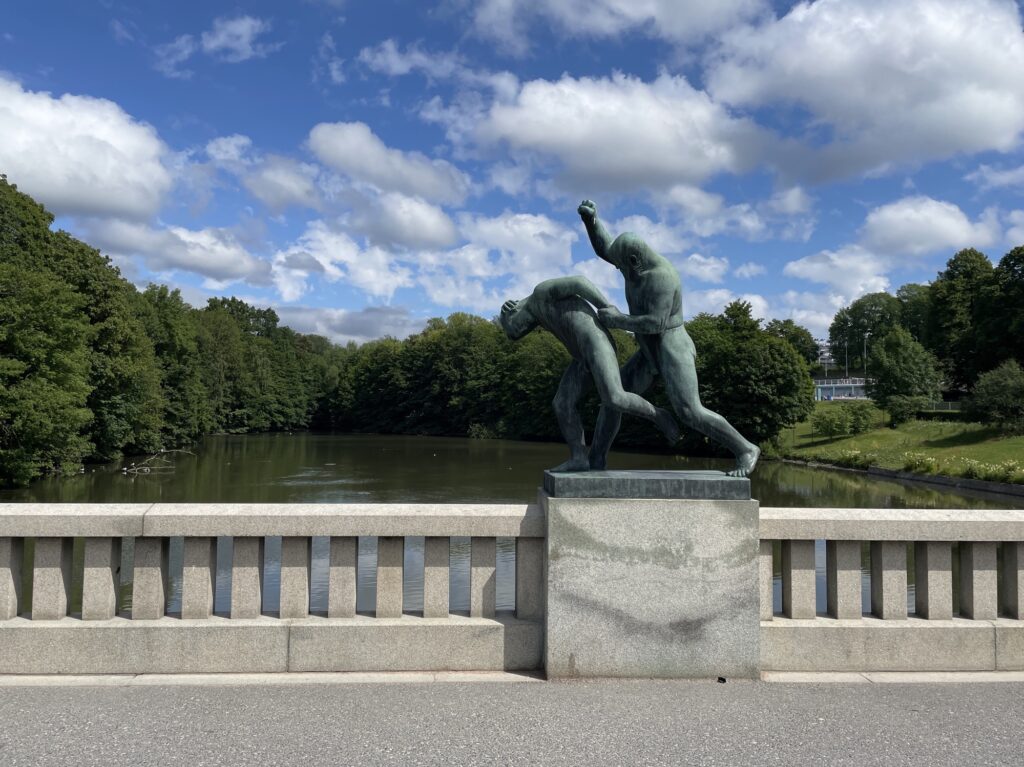
#norwayisbeautiful
